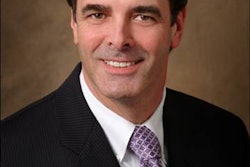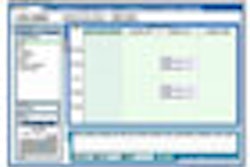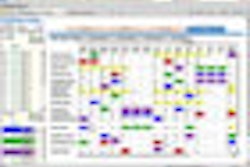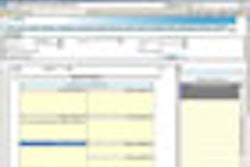The adoption of speech recognition and structured reporting technology has led to mixed results, according to a presentation at the recent Digital Healthcare Information Management Systems (DHIMS) meeting in San Antonio.
Structured reporting has been in use for several years, typically in mammography, cardiology, and some 3D workstation applications and ultrasound units, according to Dr. David Weiss of Geisinger Medical Center (GMC) in Danville, PA.
"Otherwise, among radiologists, very few departments are using structured reporting across their department," Weiss said during his talk, sponsored by the University of Rochester School of Medicine and Dentistry.
Speech recognition has been around for a while, too, but has become practical only in the last eight or nine years, Weiss said.
The two speech recognition workflow types are the radiologist model and the transcriptionist model, Weiss said. In the radiologist model, radiologists dictate, edit, and sign the report. The transcriptionist model allows for transcriptionists to correct the dictation and send it back to the radiologist for final editing and signing.
Structured reporting has tended to find some level of acceptance with mammography, he said.
"I'm always surprised that people at my institution and elsewhere will absolutely refuse to use speech recognition, but will have no problem with using structured reporting for mammography; and to me it's a worse system," Weiss said. "I think it's accepted because mammography is (used on) a one-organ system with a very limited pathophysiology and sort of a linear decision process. Also, if I use structured reporting, I don't have to worry about transmitting the BI-RADS category to the RIS."
Case studies
Adoption of speech recognition led to a favorable outcome at Weiss' previous institution, Chestnut Hill Hospital in Philadelphia. The general radiology practice there had an annual imaging exam volume of 100,000 studies and converted to speech recognition back in 1998.
Speech recognition produced a turnaround time average of two hours, with most studies signed off in 10 to 20 minutes, Weiss said. "We felt at the time that it really gave us a competitive advantage," he added. "Our clinicians really loved this system because they got their reports so quickly."
At Weiss' current practice at GMC, the institution uses digital dictation, structured reporting for mammography, and speech recognition. Radiologists are encouraged but not required to use speech recognition. As a result, a combination of speech recognition and digital dictation is being employed.
Although there was initial buy-in for speech recognition technology at GMC, adoption was hurt by unrealistic expectations of accuracy, some issues with the speech engine, and department disruption, Weiss said.
The message from leaders was also inconsistent as to whether to use the technology or not, Weiss said. In addition, there was no defined end point for digital dictation.
"We never said, 'As of July 2007, we're pulling the digital dictation and you have to use (speech recognition),' " he said. "Radiologists really didn't have an incentive to take the time to learn this system."
Structured reporting and speech recognition have the advantages of yielding cost savings and improved turnaround time, Weiss said. The problem is that cost savings don't tend to benefit radiologists much, and turnaround time is usually ranked below accuracy and productivity in terms of radiologist priorities.
Disadvantages for the technologies include a time penalty and distraction from image viewing, Weiss said. "These disadvantages are directly on (the radiologist's) shoulders," he said.
Clinicians are among the real stakeholders who benefit from these technologies, Weiss said.
"They're gaining clinical benefits from instant data availability and data tracking," according to Weiss. "Arguably, as an academic radiologist you might be interested in that as well. But it may not be your primary focus, and it is certainly not your primary focus if you're a busy private practice radiologist."
Administrators are also stakeholders, who tend to be happy with the financial and turnaround time benefits of these systems, Weiss said.
"Especially with independently contracted radiologists, they don't have to pay for transcription anymore, even though it's the radiologists who are doing the editing," he said.
Structured reporting tends to come in three flavors, including a standard format, an itemized report, or a report constructed with existing data elements. While it would seem that clinicians would prefer a standard format, in one case, a radiology group lost its contract because its reports were considered too consistent by the clinicians (Journal of the American College of Radiology, December 2007, Vol. 4:12, pp. 890-894).
Itemized reports were overwhelmingly preferred by clinicians in one study (American Journal of Roentgenology, March 2001, Vol. 176:3, pp. 591-598). However, other research found no time savings for clinicians or radiologists (AJR, September 2005, Vol. 185:9, pp. 804-812) and that a template is not useful for a complex study (JACR, October 2007, Vol. 4:10, pp. 667-669).
Resident training may also suffer from relying on this structured reporting format, he said.
Another structured reporting approach constructs reports using existing data elements or via mouse clicks or some other entry device to create a report that is practical. However, Weiss found that it took nine separate mouse clicks to generate a recent normal mammography structured report, and five clicks with the use of a template.
"For me, that's still five mouse clicks too many," he said. "I don't want to have any input into my report; I want my PACS and RIS to present me with a report for my approval."
A finding of a single cluster of microcalcifications required at least 27 mouse clicks to report that one abnormal finding. "That is atrocious, and even more so when you think about it, that all of that time my eyes were on a computer screen and not searching for that second or third abnormality," Weiss added. "At least to me, that's completely unacceptable."
Many studies also have shown decreased productivity for speech recognition. However, other research has shown no decrease in radiologist productivity, including a paper from the University of Pittsburgh Medical Center at the 2005 RSNA annual meeting and joint research from Massachusetts General Hospital in Boston and New York University at the 2007 RSNA meeting.
A recent American College of Radiology (ACR) reporting symposium advocated the use of a hybrid speech recognition and structured reporting systems model with a free text option, Weiss said. Future systems should also leverage parallel decision-support tools and system integration, he said.
By Erik L. Ridley
AuntMinnie.com staff writer
May 12, 2008
Related Reading
Voice recognition key to fast report turnaround, April 24, 2008
White noise may improve accuracy of SR system, November 27, 2007
Implementing SR before a hospital mandates gives radiology practice upper hand, November 27, 2007
Wise planning helps bring 3D lab to the community practice, February 19, 2008
ARRS study: Gender differences affect speech recognition accuracy, May 8, 2007
Copyright © 2008 AuntMinnie.com



















